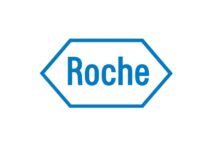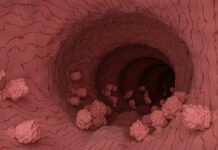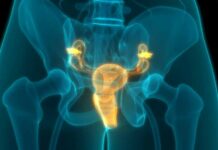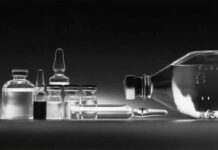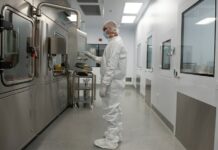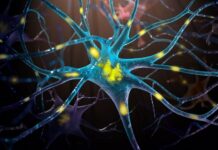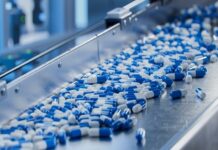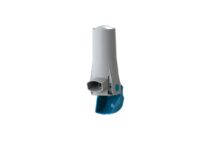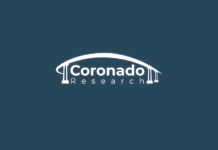There is not a shred of doubt when we say that the ecosystem of the planet is getting contaminated due to Active Pharmaceutical Ingredients- APIs which are indeed a rising danger when it comes to wildlife and human health, of course.
There are efforts that are put-in to upgrading wastewater treatment infrastructure so as to eliminate drugs before they get released into waterways. However, the fact is that greener drugs need to be designed so as to lessen the environmental impact, as per 17 leading international scientists who went on to publish a new study in Nature Sustainability.
Greener drugs go on to reduce the potential for pollution all across the life cycle. The fact is that humans happen to be living in a very medicated world, with pharmaceutical drugs being an integral part of it today and in the future too. However, the dependence on pharma has indeed come at a massive cost.
Discharges to the ecology during the course of drug production have seen the ecosystem get contaminated with a mix of APIs and their additives, metabolites, excipients, adjuvants, and transformation products.
Apparently, there is a wide spectrum of drugs that are detected across the environments throughout all the continents of the earth. Exposure to a trace concentration of the drugs can go on to have a very severe impact on human health as well as that of wildlife.
The pharmaceutical pollutants go on to represent a specific, intricate challenge due to the fact that there are various kinds of drugs that have been detected within the ecosystem across the world. These drugs have a wide range of effects. The fact is that the drugs have to be designed to not only be safe and effective, but they should also have a lower potential risk to human and wildlife health when they are present in the environment.
The pollutants in the Environment
It is the same trait of pharma that makes them effective in animals and humans that also makes them potentially hazardous to the environment. Drugs happen to be specifically designed so as to have biological effects, and that too at low doses.
It is well to be noted that the extent of API pollution was seen in a large-scale study that happened to measure 60 varied drugs in river water and was taken from 1052 locations in 104 nations.
Around 43% of the sampled elements had levels of on drug at least that went on to exceed what is considered to be safe for ecological health.
Wildlife Threat
There is evidence that has grown in number that says that exposure when it comes to the trace concentrations of APIs as well as their mix can go on to cause critical developmental, physiological, behavioural, and morphological alterations across wildlife.
The point here is that API pollution poses a threat to humans and fauna alike, as witnessed in the antibiotic release scenario within the environment, which can indeed act as a selection pressure that promotes the mobilization and also the horizontal transfer of a range of genes pertaining to antibiotic resistance.
The drug cycle and the need for reformation
So as to decrease the pollution of drugs, the pharmaceutical sector as well as its customers have to assess as well as reform numerous elements of the intricate drug life cycle. One needs to be more informed about sustainable prescribing practices and usage since most environmentally sustainable pharmaceuticals are not needed and, as a matter of fact, not prescribed.
There is going to be a need for the training of pharmacists, nurses, physicians as well as veterinarians and there have to be guidelines issues that have in them the environmental effect of medicines.
To start with, public awareness campaigns will be pretty important given that there is at present limited know-how on prescribed and also OTC medications, which can have a drastic effect on the ecology by way of, if not an apt disposal. The main element to reforming the drug life cycle happens to be the design in terms of greener pharmaceuticals, which happen to be more easily as well as completely degraded within the ecology.
It is well to be noted that robust regulations along with rising oversight are also required, like the polluter pays principle, where the one who happens to be polluting should go on to bear the cost of control along with the prevention measures.
As per a figure, at least 48% of the overall wastewater across the world flows through into the ecosystem sans any kind of a treatment thereby highlighting the urgent requirement to raise the geographical extent of infrastructure related to wastewater treatment. It is worth noting that it is only Switzerland that has gone on to execute advanced tertiary treatment of wastewater at a national level.
There are, however, barriers that do exist on the path to greener and more sustainable drug design, such as rising economic and time investment within research, development, as well as manufacturing processes.
There are several pharmaceuticals that are already on the market that haven’t been designed intentionally taking into mind environmental sustainability, however, they are readily biodegradable in the environment.
Greener Drugs
Due to the fact that drug design happens to be the first step in the pharmaceutical life cycle, greener drugs go on to decrease the potential when it comes to pollution across the lifecycle.
The contamination of the ecosystem due to pharmaceuticals happens to be exacerbated by way of other widespread environmental transitions such as habitat destruction, climate change, etc. The point is that the drugs in the environment have been a rising issue for quite some time now. However, with evidence pertaining to adverse effects on wildlife, along with a lack of data in relation to the environmental risks of most of the drugs, and a marked rise in the use of many types of drugs, one needs to better make sure that human medicines go on to pose as minimal a threat to the wildlife as there can possibly be.



